Serbian Food Dishes: Basic Overview
Common Ingredients
Common Cooking Methods
Courses
Meals
Key Taste
Eating Etiquette
Meal Presentation
Culinary Festivals
Influence and Fusion
Popular Types of Serbian Dishes
-
Soups and Stews
Soups and stews are common in Serbian cuisine, often served in clay pots or deep bowls.
They are mostly rich and flavorful, featuring meats, vegetables, and legumes as the main ingredients.
Soups are great appetizers, while Serbians enjoy hearty stews for the main course.
Many soups and stews are flavored with paprika or strong spices for vibrant colors and robust flavors.
-
Bread and Doughs
Bread is the cornerstone of Serbian cuisine and is present at every meal.
Most kinds of bread have a neutral flavor, but sweet bread is also popular.
Baking and pan-frying are popular ways of preparing bread in Serbia.
-
Cakes and Pastries
There are many types of cakes and pastries in Serbia, such as cream cakes and filled pastries.
In Serbia, many sweet cakes originated in Central Europe, while savory pastries often have Ottoman origins.
These dishes are usually made with wheat flour, milk, butter, and sugar.
Serbian cakes and pastries are suitable for many occasions, especially special holidays and occasions.
-
Desserts
Serbian cuisine offers many delicious desserts for both daily and celebratory meals.
These desserts are often very sweet and diverse in texture, from sticky jam to soft stuffed fruits.
The main ingredients of these dishes include fruits, sugar or syrup, flour, and dairy.
Serbian dishes are specialties closely associated with Serbia, a country that bridges the Balkans and Central Europe. As a result, these dishes are characterized by a blend of cooking ideas from both regions.
Turkish food offerings, Austrian specialties, and Hungarian dishes play a particularly important role in shaping Serbian cuisine. Neighboring Balkan countries and Mediterranean cuisine are other notable factors.
While Serbia is famous for rich meat-heavy dishes, local specialties also rely on vegetables, dairy products, spices, and herbs. This blend of ingredients results in many delicious food offerings with aromatic and balanced flavors.
Read on to discover more about traditional Serbian dishes, including their core features, global popularity, and healthy aspects.
Next, I will cover the 25 most famous dishes from Serbia before giving you an overview of Serbian cuisine. Lastly, I will recommend some excellent beverages to pair with local fare.
25 Most Popular Serbian Dishes with Filters
Keep on reading to discover 25 wonderful dishes in Serbia. I have ranked these options in order of popularity for your ease of reference.
You can also filter my list according to alphabetical sorting, main ingredients, taste, cooking methods, dish types, courses, and global popularity.
Alternatively, navigate the dishes based on traditional, national, and street food options. The advanced filters will help you learn about them all!
Ćevapčići
- National
- Street Food
- Traditional
Ćevapčići is the Serbian name for ćevapi, a grilled dish made of minced meat (usually beef and pork) and various spices. It resembles skinless sausage and is typically grilled over an open flame, offering a smoky flavor and a tender texture.
Ćevapčići was created somewhere around the 1860s based on hajdučki ćevap, a grilled and skewered meat dish in Ottoman cuisine. In the 1920s, people in Belgrade had to queue to eat this dish, even though many shops only started selling it at 10 AM.
The combo of ćevapčići, lepinja (flatbread), chopped onions, sour cream, and ajvar ( a red pepper-based condiment) is a well-known dish in many parts of Serbia.
Burek
- Street Food
- Traditional
Burek is a Serbian savory pastry that traces its origins back to the Ottoman Empire. It was brought to Niš (a Serbian city) in the 15th century and eventually became very popular.
A delectable burek consists of multiple layers of flaky filo dough and a delicious filling. The traditional option is minced and seasoned meat, such as lamb, pork, or beef, though burek filled with cream cheese or vegetables also exists.
While burek is a beloved breakfast dish, locals love serving it as a lunch item or snack, too. Yogurt is a must-have accompaniment for burek, as its tang balances nicely the rich and savory goodness of the pastry.
Pljeskavica
- National
- Street Food
- Traditional
Pljeskavica is a Serbian grilled dish of spiced meat patty. If you ask a Serb for fast food recommendations, they will often point you to this flavorful delicacy.
The main ingredients of pljeskavica include minced beef or lamb and spices, which are formed into large, flat patties before being grilled. The name stems from the term pljesak, which literally means “to clap your hands,” referring to the act of shaping the meat mixture.
Also known as Serbian burgers, pljeskavica is mainly stuffed with condiments and relishes into flatbread, with kajmak (milk cream), ajvar, and urnebes (spicy cheese salad) being well-liked accompaniments.
Pasulj
- Traditional
Pasulj is a traditional bean stew in Serbia and many Balkan countries. This comfort dish is made with white beans, pinto beans, onions, garlic, carrots, spices, and meat, such as smoked pork or sausages.
Pasulj dates back to the 17th century when beans were introduced to the Balkans. Nowadays, locals love to have a plate of comforting bean stew for Christmas Eve and other special occasions.
There is even a famous Serbian idiom with pasulj, “prosto kao pasulj,” and it means something like “as easy as pie.” Prebranac is a baked variant of pasulj.
Sarma
- National
- Traditional
Sarma is a well-known roll dish in Serbian cuisine. It involves rolling cabbage leaves around a mix of minced beef, rice, onions, and spices, then simmering the rolls in a flavorful tomato-based sauce.
Besides this classic version, Serbians also prepare sarma with grape leaves for the wrapping or fish and vegetables for the filling. Vegetarian sarma is highly popular during the Lenten season, while the savory variations are a staple for winter and festive occasions.
Sarma originated in the Ottoman Empire. Dolma is a similar stuffed dish that replaces cabbage or grape leaves with juicy vegetables like tomatoes or eggplants.
Gibanica
- National
- Traditional
Gibanica is a cherished pastry dish or pie in Serbia and throughout the Balkans. It typically features numerous layers of filo pastry encasing eggs, fresh white cheese, and other ingredients.
Some versions of gibanica contain savory ingredients, like spinach, minced beef or lamb, and pumpkins. Such flexibility makes gibanica a versatile dish that locals consume as a snack, appetizer, dessert, or breakfast dish.
In 2007, the town of Mionica in western Serbia produced a gigantic gibanica that weighed over 2204 pounds (1000 kilograms).
Ajvar
- Traditional
Ajvar is a famous Serbian relish made with roasted red bell peppers, eggplants, hot pepper, garlic, olive oil, and salt to taste. Originating in Serbia around the 19th century, it has become popular throughout the Balkans and even achieved international fame.
Locals usually prepare ajvar in the fall, which coincides with the harvest season and when vegetables are at their best. Flavorwise, ajvar ranges from sweet to tangy, with smoky and salty undernotes.
Ajvar is an ideal match for bread, sandwiches, burgers, grilled meat, sausage, and more. To diversify your choices of Serbian relish, try lutenica, which is an eggplant-based condiment with a savory and sometimes spicy taste.
Palačinke
- Street Food
- Traditional
Palačinke, also spelled as palaccinka, is a Serbian pancake similar to French crêpes. It is a light, soft, and elastic dish made from a simple batter of eggs, flour, and milk.
In Serbia, palačinke often appears alongside sweet or savory ingredients, from walnuts, honey, chocolate sauce, and cream cheese to ham and cheese. These combos are wonderful snacks or light meals for any time of the day.
Gulaš
- Traditional
Gulaš is the Serbian version of goulash, a rich stew popular in the Balkans and Central Europe. Originally from Hungary, it entered Serbia sometime after the 16th century.
Like the classic version, gulaš includes beef, onions, carrots, and spices, especially paprika. But Serbians make their gulaš special by adding more vegetables and serving the stew with mashed potatoes and noodles
Karađorđeva Šnicla
- National
- Traditional
Karađorđeva šnicla, also known as Karađorđe’s schnitzel, is a Serbian dish of breaded, deep-fried rolled pork or veal cutlet. Famous for its crispy exterior and rich, creamy interior, it is often served with light dishes such as tartar sauce or baked potatoes.
Karađorđeva šnicla dates back to 1959, when the chef Mića Stojanović, while preparing chicken Kiev, couldn’t find enough chicken and had to improvise. The resulting dish looked like the Order of the Star of Karađorđe, a prestigious state medal, hence its name.
Sopska Salata
- Traditional
Sopska salata is a crowd-pleasing salad dish in Serbia. It is a local adaptation of shopska salad from Bulgaria.
Sopska salata is a colorful combination of diced tomatoes, cucumbers, onions, and bell peppers. These crispy vegetables are dressed with olive oil or sunflower oil and topped with creamy and tangy sirene (a white, brined cheese similar to feta).
Srpska salata, literally “Serbian salad,” is a dish similar to sopska salata and also enjoys widespread popularity in Serbia.
Mućkalica
- Traditional
Mućkalica is a spicy Serbian stew made from a mix of grilled or pan-fried meat. The leftover meat is shaken and mixed with bell peppers, onions, tomatoes, and spices in a broth before being baked.
Mućkalica hails from the city of Leskovac in southern Serbia. Its name was derived from the Serbian term “mućkati,” which means to mix, shake, and combine.
Thanks to its various ingredients, mućkalica is a colorful and flavorful stew with rich and tender pieces of meat and vegetables. Serbians commonly enjoy it with bread.
Domaća Supa
- Traditional
Domaća supa is a popular chicken soup among Serbian households. As a symbol of home cooking, it is a cherished, easy-to-cook dish that many locals fondly associate with beautiful memories.
The preparation of domaća supa involves simmering chicken and vegetables slowly to extract maximum flavor, resulting in a light, nourishing broth. Chopped onions, green herbs, and egg yolks are popular additions.
Domaća supa is an ideal starter for setting the stage for a hearty meal. For similar chicken soups, bela čorba is a fancier option that features more ingredients.
Pogača
- Traditional
Pogača is a common flatbread in Serbia and many Balkan countries. Its name stems from the Latin word “panis focacius,” which means “flatbread baked directly on a fireplace/ under the fire’s ashes.”
This interesting name explains the traditional method used in cooking pogača, which is a round bread made with wheat flour and lard or oil. Some versions have a savory filling of potatoes, minced beef, or cheese.
Proja
- Traditional
Proja is a traditional cornbread that originated in the rural parts of Serbia. Created in the 1950s, it was initially considered peasant food but has gained popularity across all social classes over time.
The Serbian cornbread offers a sweet taste and a moist and dense texture thanks to the inclusion of cornmeal, eggs, and optional cheese or yogurt. This rustic dish pairs beautifully with various dishes, from stews to pickled vegetables and sausage.
Kiflice
- Traditional
Kiflice is a small, crescent-shaped pastry that holds a special place in Serbian cuisine. It was apparently derived from kifli in Austrian cuisine, a pastry that also serves as the inspiration for French croissants.
Airy kiflice boasts a tender, flaky texture. In Serbia, people regularly fill it with cheese, fruit jams, ham, or poppy seeds and serve the pastry on Christmas and other holidays.
Škembići
- Traditional
Škembići is a classic Serbian soup made from tripe (cow’s stomach lining). Dating back to at least the 13th century, it is considered one of the oldest Serbian dishes.
Making this Serbian tripe stew requires simmering this ingredient for hours to tenderize it. With seasonings like garlic, vinegar, and chili, škembići is a robust stew to serve with crusty bread, a wonderful food combo, especially during the colder month.
Urnebes
- Traditional
Urnebes is a fascinating Serbian salad combining salty cheese, cooked egg yolks, sour cream, garlic, roasted peppers, paprika, and vegetable oil. Its name translates to “chaos” or “havoc,” reflecting the salad’s fiery nature.
Urnebes is a popular accompaniment for grilled meat and many savory dishes, especially Serbian burgers. In southern Serbia, the birthplace of urnebes, people like their cheese salad to pack a lot of heat.
Česnica
- Traditional
Česnica is a special type of Serbian bread prepared for Christmas. It is deeply rooted in Serbian Orthodox Christian traditions and customs.
For example, česnica has a coin baked into it. When the family gathers around the Christmas table, they rotate the bread three times counterclockwise before breaking it up, and whoever has the piece with the coin will have good luck for the coming year.
While česnica is often made with only wheat flour and water, some versions feature additional ingredients like chopped nuts and raisins.
Slatko
- Traditional
Slatko, literally “sweet,” is a time-honored Serbian fruit preserve. Its popular ingredients include strawberries, cherries, blueberries, and plums.
With a thick texture mixed with whole fruit pieces, slatko is often accompanied by a glass of water or used to top desserts.
A common Serbian custom is to welcome honored guests with two spoonfuls of slatko. However, asking for the third spoonful is considered impolite on the guest’s part.
Tufahije
- Traditional
Tufahije, literally “apple,” is an appetizing apple-based dessert in Serbia and all over the Balkans. Hailing from Ottoman cuisine, it is a pleasantly sweet treat to enjoy with strong black coffee.
To make tufahije, people core and stuff apples with walnuts, poach them in sugar water, and top everything with whipped cream. The resulting dessert blends beautifully the softness of the sweet apple with the crunch of nutty walnuts.
Koljivo
- Traditional
Koljivo, literally “wheat,” is a must-have Serbian dessert for many special occasions, such as funerals, Christmas, the first day of the Lenten season, and the Slava (the annual veneration of a family’s patron saint).
Despite its significant meaning of life, death, resurrection, and renewal, koljivo is a simple dish. It consists of only wheat flour and seasonings, like honey, sugar, nuts, and spices, though people usually decorate it with symbols like crosses or the initials of the deceased.
Tulumba
- Street Food
- Traditional
Tulumba is a popular Serbian fried dough soaked in sweet syrup. It is a dessert of Ottoman heritage that was introduced to the country in the late 18th century.
The dough of tulumba consists of flour, semolina, and eggs and is extruded through a syringe-like instrument to create its distinctive shape. Deep-frying gives this treat a golden hue and crispy texture, while the syrup imparts a perfect sweetness of tulumba.
Krempita
- Traditional
Krempita, literally “cream pie/ pastry dough,” is a beloved dessert in Serbia. Hailing from Central Europe, it comprises a thick layer of vanilla custard or pure cream sandwiched between sheets of puff pastry.
The velvety, creamy texture and delicate balance of sweetness are the hallmarks of krempita, making it a common sight at Serbian cafes and patisseries.
Kacamak
- Traditional
Kacamak is a typical Serbian thick cornmeal porridge often associated with rural regions. It originated in the former Ottoman Empire and has numerous variations in countries that were Ottoman territory.
Traditionally, kacamak is a dish made with only cornmeal and butter or oil, but cheese, milk, kajmak, and bacon can be added for extra richness. This rustic dish goes well with many savory specialties.
I have just provided you with in-depth information about popular Serbian dishes. Next, I urge you to look at the overview of local cuisine.
What Is Special About Serbian Cuisine?
The following factors play an essential role in the formation and development of Serbian dishes.
Due to its rich history, Serbia has experienced various culinary exchanges over time. Notable sources of inspiration for Serbian dishes include Ottoman, Austrian, Balkan, and Mediterranean cuisines.
In particular, the long period of Ottoman and Austro-Hungarian rule has made Serbian cuisine a symphony of Ottoman and Central European culinary influences.
The country’s diverse landscape provides locals with many types of ingredients. Fertile plains, mountains, and rivers produce a variety of fresh produce, meats, and dairy products, leading these ingredients to become the cornerstone of Serbian cuisine.
For much of its history, Serbia was predominantly rural and agrarian. This lifestyle results in the importance of home-cooked meals, traditional cooking methods, and the preservation of food through canning, pickling, and smoking.
Serbian culture places a strong emphasis on hospitality and community. Meals are often large, communal, and festive occasions.
Therefore, many Serbian dishes are meant to be shared and enjoyed in groups, especially during celebratory meals for Orthodox Christian holidays and celebrations like the Slava.
Next, let’s look at the most wonderful food and drink pairings you can go for in Serbia.
What Are the Best Beverages to Accompany Serbian Dishes?
People in Serbia regularly pair their dishes with the four main types of beverages below.
Coffee
Whether it’s strong black coffee or a creamy coffee-based beverage, Serbian desserts and pastries like pogača, kiflice, and slatko make ideal pairings.
Wine
Serbian wine matches beautifully with various kinds of beverages, from meat-based dishes like ćevapčići and Karađorđeva šnicla to light specialties like sopska salata and gibanica.
Beer
Beer is a perfect accompaniment for savory dishes, such as čevapčići, pljeskavica, burek, and mućkalica.
Rakija
With a rich and fruity taste, rakija is the go-to alcoholic beverage for various dishes in Serbian cuisine, such as urnebes, škembići, and česnica.
Now that you have learned so much about Serbian specialties, let me know what you think about this cuisine in the comment section. Don’t forget to share this list of Serbian dishes with your friends!



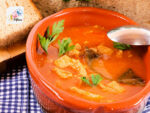
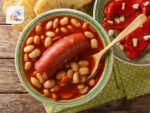
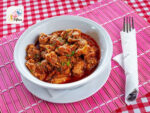
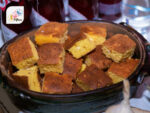


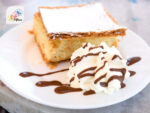



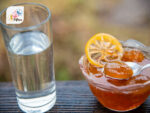

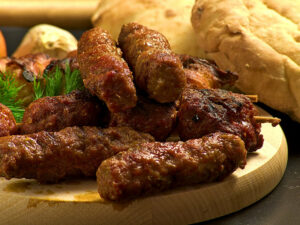
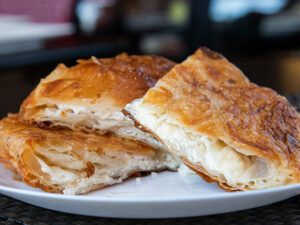
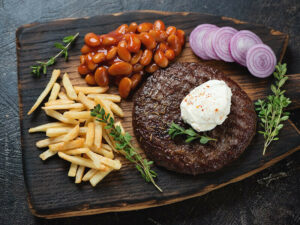
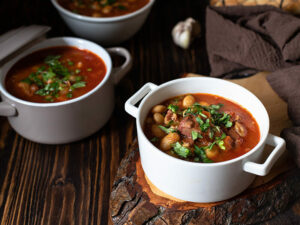
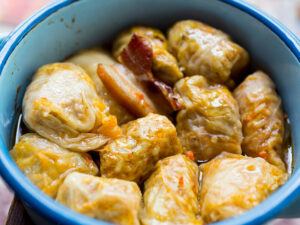
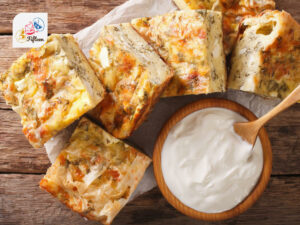
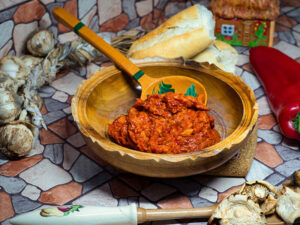
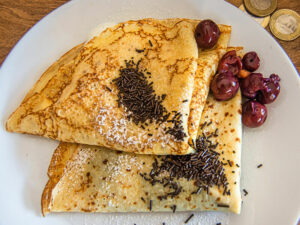
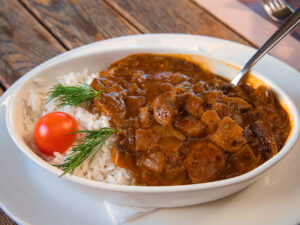
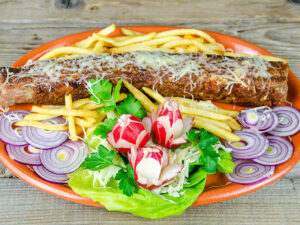
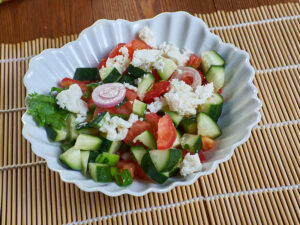
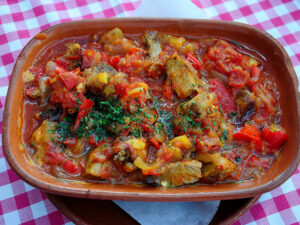
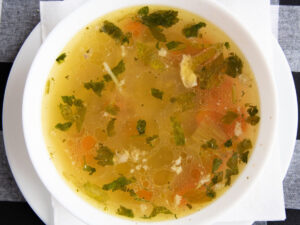
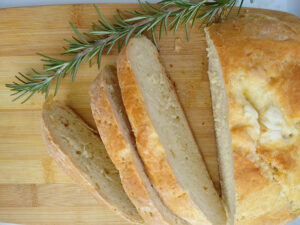
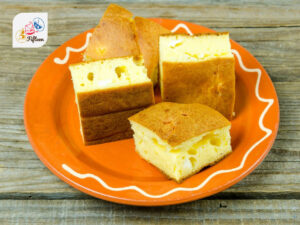

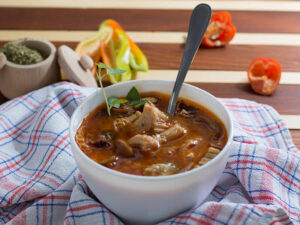
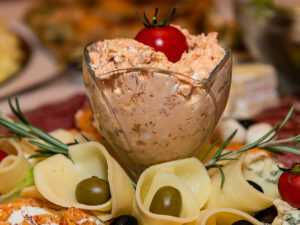
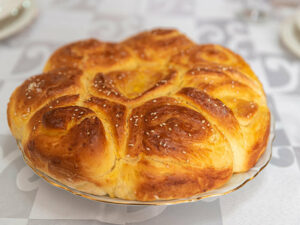
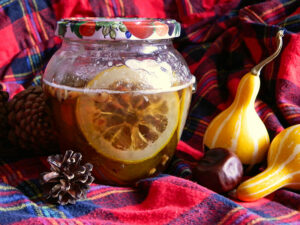
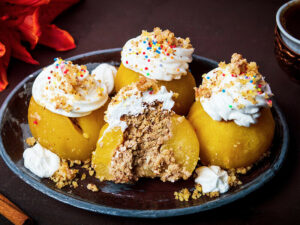
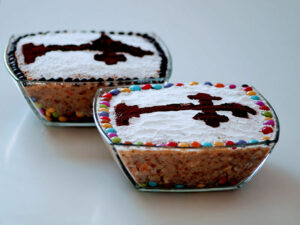
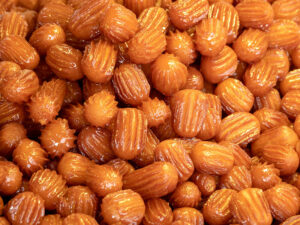
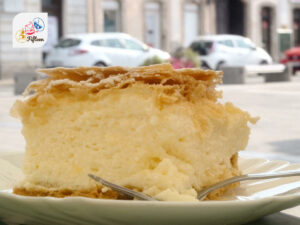
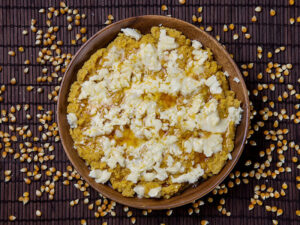
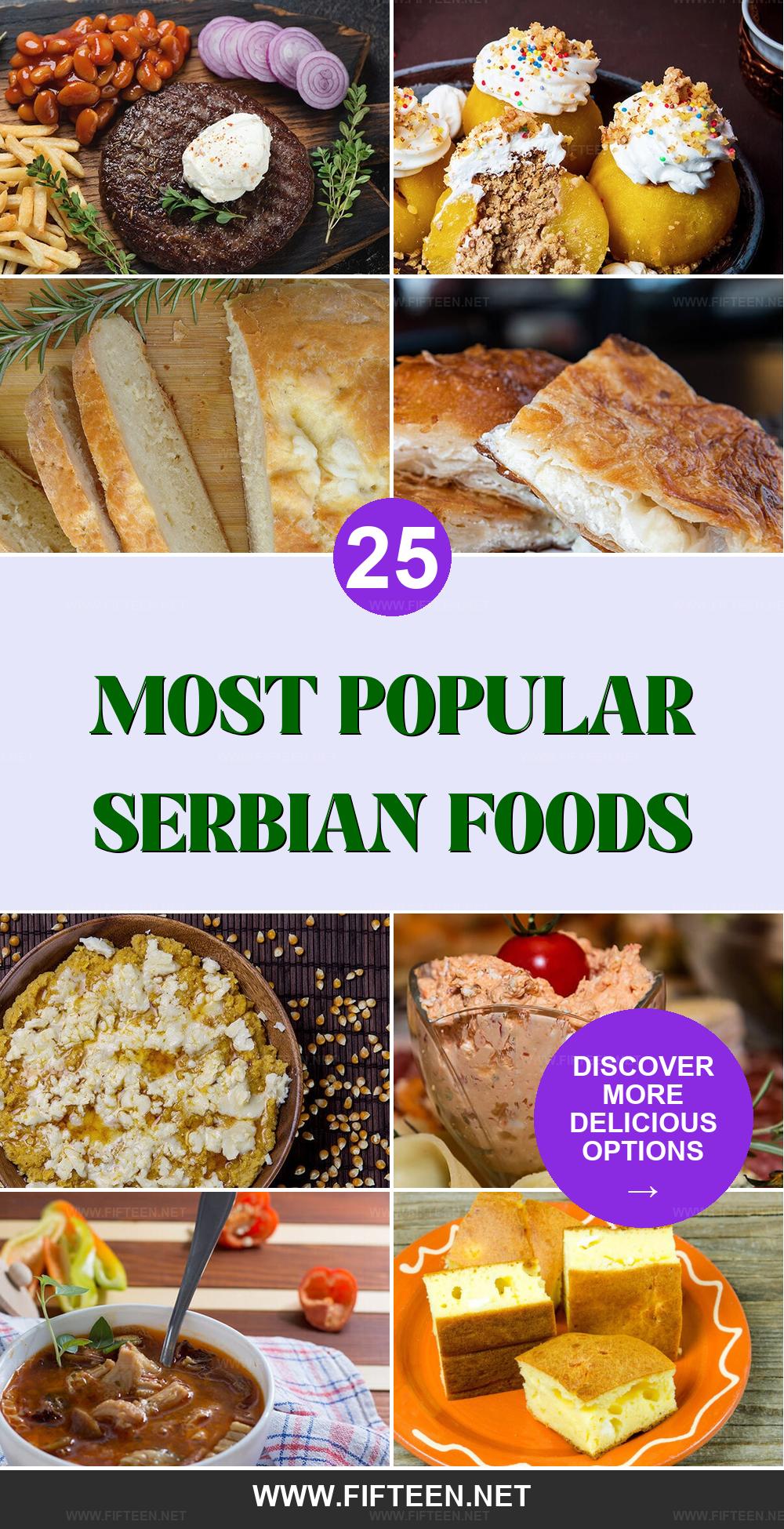
Jamie Scott
Editor in Chief, Senior Content Writer
Expertise
Home Cooking, Meal Planning, Recipe Development, Baking and Pastry, Food Editor, Cooking-video Maker, Western Food Evaluation Expert
Education
Le Cordon Bleu College of Culinary Arts
Local Community College, New York, NY
Jamie Scott is a skilled culinary expert and content creator specializing in Western cuisine. With over 15 years in the culinary field and formal training from Le Cordon Bleu, Paris, Jamie deeply understands how to blend nutrition with delicious flavors. His passion for cooking matches his commitment to making healthy eating accessible and enjoyable.
On Fifteen.net, Jamie brings a fresh perspective to classic dishes and beverages, offering readers insightful recipes, cooking tips, and a fresh view on meal planning that emphasizes taste, health, and simplicity.